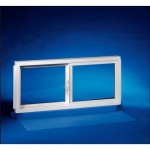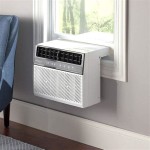Waste Pump for Basement Bathroom: Essential Aspects to Consider
Installing a bathroom in a basement can be an excellent way to add extra space and functionality to your home. However, one of the challenges associated with basement bathrooms is dealing with wastewater drainage, as most basement floors are below the level of the main sewer line.
This is where a waste pump comes into play. A waste pump is a device that grinds and pumps wastewater from a basement bathroom up to the main sewer line. Without a waste pump, wastewater would not be able to drain from the basement bathroom properly.
Choosing the right waste pump for your basement bathroom is essential to ensure proper drainage and prevent potential problems. Here are some critical aspects to consider when selecting a waste pump:
1. Type of Waste Pump
There are two main types of waste pumps: macerating pumps and sewage pumps.
- Macerating pumps grind solid waste into a slurry, making them suitable for use with toilets, sinks, and showers.
- Sewage pumps are larger and designed to handle larger solids and higher volumes of wastewater. They are typically used for sump pumps or to pump wastewater from multiple fixtures.
2. Pump Capacity
The pump capacity refers to the amount of wastewater the pump can handle per minute. The capacity of the pump should be sufficient to handle the expected wastewater flow from all fixtures in the basement bathroom.
To determine the required pump capacity, consider the following factors:
- Number of fixtures in the bathroom
- Maximum flow rate of each fixture
- Simultaneous use of multiple fixtures
3. Head Height
The head height is the vertical distance from the pump's discharge outlet to the main sewer line. The pump should have sufficient head height to pump wastewater up to the main sewer line.
To determine the required head height, measure the vertical distance from the pump's installation location to the point where the wastewater will discharge into the main sewer line.
4. Discharge Size
The discharge size refers to the diameter of the pipe that connects the pump to the main sewer line. The discharge size should match the size of the main sewer line.
5. Electrical Requirements
Waste pumps require electricity to operate. Ensure that the pump you select is compatible with the electrical supply in your basement.
Consider the following electrical requirements:
- Voltage
- Amperage
- Circuit breaker or fuse size
In addition to these essential aspects, you may also want to consider the following when selecting a waste pump:
- Noise level: Some waste pumps can be noisy, especially macerating pumps. Consider the noise level of the pump when selecting one for your basement bathroom.
- Warranty: Choose a waste pump with a reasonable warranty period to protect yourself against any potential defects or malfunctions.
- Reputation: Look for a waste pump from a reputable manufacturer with a good track record of producing reliable and durable products.
By considering these essential aspects, you can choose the right waste pump for your basement bathroom, ensuring proper drainage and preventing any potential problems.

Everbilt 1 2 Hp Upflush System Sewage Ejector Pump Kit Sw07501tc The Home

Sewage Pump Buyer S Guide How To Pick The Perfect

Superior Pump 1 2 Hp Sewage Ejector Kit With Basin 93020u The Home

Why You Have A Mini Septic Tank In Your Basement Gold Key Home Inspections

Basement Bathroom Plumbing Planning For A Below Grade Lavatory

Basement Plumbing For Ejector Pump Up To Main Sewage Line Terry Love Advice Remodel Diy Pro Pumps

What Is A Septic Ejector Pump How Does It Work The Original Plumber

Sump Pump Sewage Ejector Finishing Basement

Sewage Ejector Pump Diagram Sewer Sump

Everbilt 1 2 Hp Upflush System Sewage Ejector Pump Kit Sw07501tc The Home







